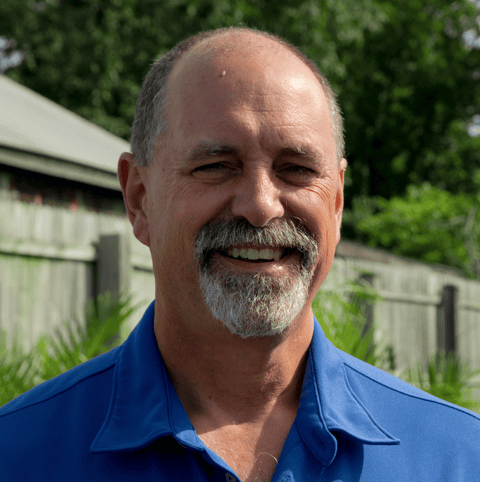
5 Challenges When Making the Change from Gas to Electric Landscaping Equipment
The landscaping industry’s switch from gas-powered equipment to quieter, less-polluting battery-powered machines just got a big boost.
California is set to become the first state in the country to phase out gas-powered lawn equipment.
California Gov. Gavin Newsom recently signed a bill that would require new small off-road engines, used primarily for landscaping, to be zero-emission by 2024.
Here at Level Green Landscaping, we’re ahead of the curve, with two DC crews already equipped with battery-powered push mowers, backpack blowers, weed eaters, and shears.
But a switch of this magnitude comes with challenges.
Michael Mayberry, chief technical officer at Level Green, talks about the exciting switch — and the hurdles.
Bye, Gas Leaf Blowers
While California is leading the way and accelerating the timetable for the switch, movement is already happening in the DC area, Mayberry says.
Washington DC mayor Muriel Bowser signed a bill in 2018 banning the use of gas-powered leaf blowers, to go into effect in 2022.

“The switch to electric means a lot of changes and challenges for our company and our infrastructure,” Mayberry says.
What kinds of challenges? Here’s a look:
1. Challenges for Crews
“Crews are very wedded to the equipment they use,” Mayberry says. “They have a comfort level that they’re used to. Any change is difficult.”
The hope is to find crews “who will give it a fair shake and offer insight,” Mayberry says, “and not just reject it because it’s different.”
2. Charging the Batteries
A lot of batteries.
“It’s easy to say, ‘Let’s switch to electric,’” Mayberry says. “Then 10 electric mowers show up. How do I charge them?
“The problems compound quickly when you’re talking about a whole fleet of mowers,” he says. “You don’t want to have to pull all the batteries off at night to charge them, then have to put them all back every morning.”
Level Green is working with a company to re-fit their trailers with electricity, so the trailers with all the equipment on board can be plugged in and charge overnight.
3. Shop Infrastructure
“We have a very big shop,” Mayberry says. “There’s not enough power coming in to power a whole fleet of electric equipment.
“If you charge them from a 110 outlet, the charge time could be 12 hours,” he says. “But maybe you don’t have 12 hours between the time you charge them and the time you need them again the next day .”
So each equipment trailer needs a more powerful 220 outlet.
“That’s a huge draw of power from the grid,” Mayberry says. “It could cost tens of thousands of dollars to pull in more power. It’s a sizable expense and it can’t be done overnight. It takes planning and foresight.”
4. No More Swapping Parts
Battery-powered equipment has different parts than gas-run machines.
“You can’t swap pieces between the two,” Mayberry says. “As you convert your fleet you lose that ability.”
5. Changing Misconceptions
There’s a misconception that battery-powered equipment isn’t as powerful or effective as gas-powered machines, Mayberry says — because that used to be true.
Not anymore.
“The power of these machines is equivalent to the gas-powered machines,” Mayberry says.

But there are shortcomings.
“They don’t have the longevity of gas-powered equipment,” he says. “A gas-powered machine might run all day long. You might get four hours from an electric powered.
“But there are all types of batteries out there,” he says. “You can’t lump them all under one umbrella. Some batteries are better than others.”
Will This Switch Raise Customer Prices?
New equipment cost is considered overhead, Mayberry says, absorbed by the company.
“We don’t intend to pass these costs on to customers,” he says.
Price increases customers may notice now are due to nationwide spiraling costs of landscaping equipment and materials.
“Absolutely everything costs 50 percent more than it did last year,” he says.
“We’re Ahead of This”
Level Green equipped two of its Washington DC crews with all battery-powered equipment long before many other landscaping companies were considering it.
“We’re ahead of this,” Mayberry says “We’re trying to minimize disruption or any adverse effects so we can work the kinks out well before it’s mandatory.
“We’re not up against a deadline, but as an environmentally conscious company we want to do it as quickly as possible,” he says. “But we want to make sure we’re doing it right.”
It’s great news for customers striving to be as green as possible
Nationally, the Department of Transportation data shows that in 2018, Americans used nearly 3 billion gallons of gasoline running lawn and garden equipment. That’s equivalent to the annual energy use of more than 3 million homes.
Electric equipment puts out fewer emissions and is quieter than its noisy gas counterparts.
“Converting to electric equipment is the right thing for the environment, and for our customers,” Mayberry says.
Join Level Green in a Battery-Powered Future
When you consider gas vs electric-powered landscaping equipment, the choice for the earth is clear.
We’re excited to take this next step in environmentally friendly landscaping.
Want to join us?
If you’re not already a Level Green Landscaping client, we’d love to add you to our growing list of happy customers.
Our focus is on commercial properties like offices, mixed-use sites, HOAs, municipalities and institutions in Maryland, Washington DC and parts of Virginia.
Contact us at 202-544-0968. You can also request a free consultation online to meet with us one-on-one.
We’d love to hear from you.
Image Source: Gas-powered leaf blower

Douglass Delano
Doug Delano (and Bill Hardy) opened Level Green Landscaping LLC in 2002 to offer Washington DC, Maryland and Virginia reliable commercial landscape maintenance services.

